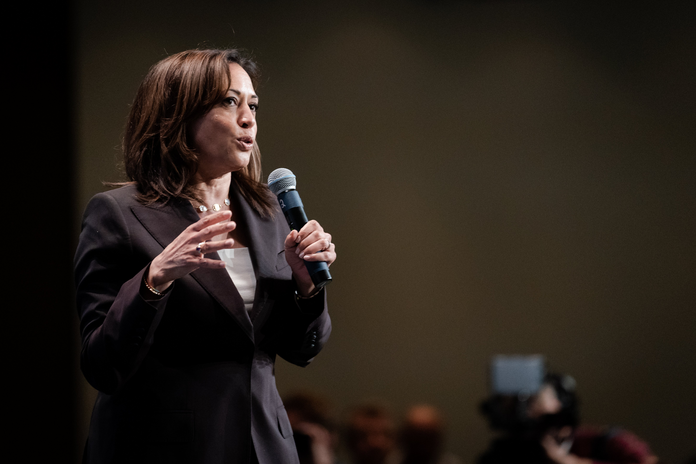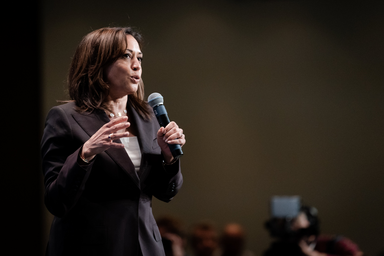Vice presidential candidates Mike Pence and Kamala Harris debated on Wednesday night in Salt Lake City, Utah.
With COVID running rampant through the Trump administration, many voters were surprised the vice presidential debate still took place in person.
On Twitter, MamaBear and Proud Nasty Woman tweeted, “Is anyone else nervous that the VP debate is going to happen even though we know Pence has been exposed to many covid positives since the Rose Garden event a week ago? #BidenHarris @KamalaHarris should be insisting added precautions. As should the state of Utah as he arrives!”
This debate was much calmer than last week’s presidential debate, but there are still many things to examine and breakdown. Here are 6 key takeaways from the vice presidential debate.
1. Divided by Party and Plexiglass
Plexiglass dividers were added to separate the candidates and the moderator for this debate. Harris and Pence were seated 12 feet apart. Experts say that these measures may not protect the candidates, as the virus is airborne. Still, the Trump-Pence campaign fought against these safety measures before eventually giving in Tuesday night.
2. Oh, FLY away, Mike Pence
One of the most memorable moments from the only 2020 vice presidential debate was the fly stuck to Mike Pence’s hair for around two minutes while the candidates debated racism in America. Within seconds, Twitter exploded with memes and accounts celebrating this laughable moment amidst a divisive and challenging time in America.
3. The Difficult Task of a Moderator
Chris Wallace, the moderator of last Tuesday’s Presidential debate, received heavy criticism for his inability to control Donald Trump and steer the debate’s direction. While the Vice Presidential debate included fewer interruptions and snarky comments, the moderator Susan Page, also had difficulties controlling the debate stage. Both candidates, particularly Mike Pence, often spoke over their allotted time and spoke without directly answering the question.
4. “Thank You”
According to a quick transcript following the debate, the words “thank you” were spoken 80 times, contrasting starkly with six times in last week’s Presidential debate. Many of the thank yous spoken Wednesday night came from moderator Susan Page in an attempt to quiet Vice President Mike Pence. Her resorting to “thank you vice president” instead of a more stern phrase to moderate the debate highlights gender roles within American politics today.
5. January 28
Susan Page began the debate by asking both candidates specific questions about Coronavirus response. Senator Harris led with “January 28.” On January 28, President Trump and Vice President Pence were informed about the coronavirus’s intensity and initial details about the virus’s spread. Despite this early lead, the Trump Administration did not tell voters about the virus’s force until it was far too late. Senator Harris claimed that the Trump Administration still does not have a response plan to the coronavirus pandemic. “The American people have witnessed what is the greatest failure of any presidential administration in the history of our country,” Kamala Harris commented on the Trump administration’s response to the coronavirus pandemic.
6. “I’m Speaking”
Harris spoke for every woman and girl in every professional, academic, and social setting tonight when she stood up to Pence with, “I’m speaking.” We cannot ignore the gender discrepancies in this setting. Several times throughout the debate, Mike Pence attempted to speak over and interrupt Kamala Harris. Each time he spoke over her, Harris responded with a short and powerful line, “I am speaking.” The moment of a Black women candidate standing up to a conservative white man lifted spirits across the nation.



